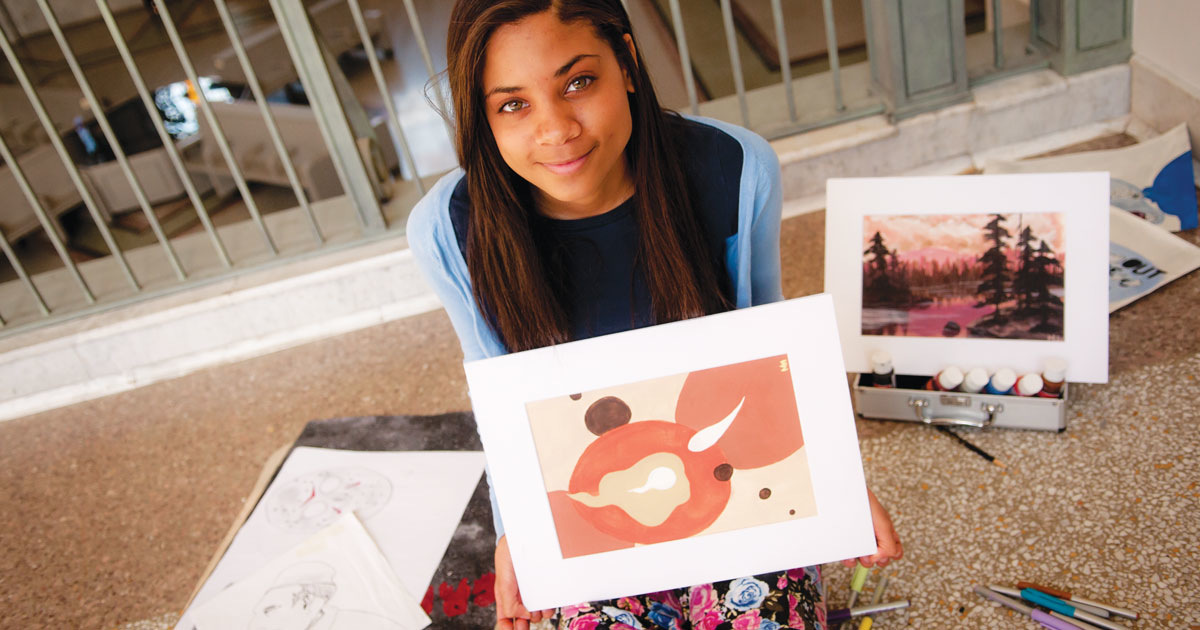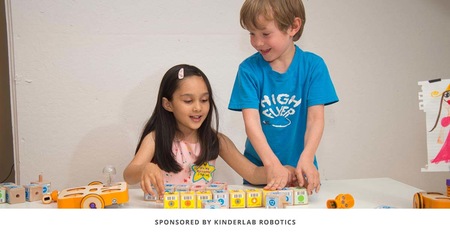The goal of focusing on STEM is to provide today's young people with the technical, critical thinking, communication and problem-solving skills they will need tomorrow to compete and succeed in a modern job market.
The theory and research behind STEM education has continued to mature, and today there are a growing group of advocates who believe that STEM is missing a key component. That component is the arts! A growing number of educators would like to add art to STEM to turn it into STEAM.
Is STEAM simply a grab for the spotlight from the liberal arts community? As an education professional with 25 years of teaching experience, I am always wary of new acronyms. In education, trends and initiatives come and go. Most initiatives fade quickly, without a positive effect on the actual transfer of knowledge from the teacher to student. Sometimes it's a lack of funding, sometimes it's a bad idea, but many times a new idea fails because it doesn't take into account the myriad demands already in place on teachers and students.
As a newly trained science teacher in the mid-'90s, I did some eye rolling when STEM was first introduced. I was successfully teaching science; how was calling it STEM going to make any difference? Well, history has shown how young and naive I was, and STEM research and implementation has continued to get stronger. The STEM movement has provided a common focus for distilling the skills society needs for a complex future. STEM initiatives have allowed educators to shift their focus from cramming content to practicing the skills that are needed to be technically literate. Science teachers have transitioned from rote blackboard learning and constrained dry recipe card experiments to more fluid, student-centered activities. Today, the focus on STEM has created activities that revolve around critical thinking, problem-solving, communication and collaboration. Will the addition of art add or detract from the successes STEM education has shown?
Many see art and science as being direct opposites. However, this is not true.
Great scientists—like artists—need to be builders, inventors and dreamers. Take Leonardo da Vinci, a great scientist and an amazing artist: This combination is not as rare as you might think. Scientists who have won the Nobel Prize are 17 times more likely than the average scientist to be a painter, 12 times as likely to be a poet and four times as liked to be a musician. There is something about having an artistic side that helps with having success in STEM fields. Expression through art encourages creativity, play and innovation. These are all traits needed for scientific breakthroughs.
Mae Jemison, the first African American woman in space, once said "The difference between science and the arts is not that they are different sides of the same coin ... or even different parts of the same continuum, but rather, they are manifestations of the same thing. The arts and sciences are avatars of human creativity." Research has shown that there is a strong connection between art and science, as both inspire and demand creative thinking.
Adding art is not about spending less time on STEM, it's about using art to inject a sense of play and spark a student's imagination.
Art encourages creative thinking and innovative interpretations. It is important to note that in this context, the word art is used to represent the full spectrum of the liberal arts: language, social studies, physical art, fine art, music and design. Exploring the use of art can provide young people with new and imaginative opportunities for communication and expression. How can a new design be presented? What is the best way to communicate a finding or discovery? How can a prototype be built? The creative processes behind art can be used to drive innovation and find inventive solutions to problems. The addition of art themes inspires young people to be creative and communicate their ideas and findings.
Art can also serve as a pathway to STEM for traditionally underrepresented students.
Not everyone fits the profile for a traditional scientist, and STEM careers today are varied and wide-ranging. The addition of art can provide another avenue for young people to experience success in STEM and aid them in learning the skills they need to be successful in the 21st century. Additionally, it can provide non-science professionals the inspiration that they need to add STEM to their curriculum. If the addition of art provides another means of motivation for STEM learning, then STEAM does not take anything away from STEM, but only adds to it.
I recommend that STEM goes full STEAM ahead. Not only does STEAM roll off the tongue a little easier, but adding art to STEM helps to inspire creativity and imagination. It can improve communication skills, and has the power to open up the fields of STEM to a more diverse pool of educators and learners. Regardless of our aptitudes, we must all live in this very modern and technical world. The greater the number of young people we can get to identify with STEM learning, the more success they will have later in life.
Celebrated physicist Richard Feynman once said, "Scientific creativity is imagination in a straitjacket." Perhaps the arts can loosen that restraint, to the benefit of all.
Contributed by Andy the Science Wiz, NAA STEM Specialist.




